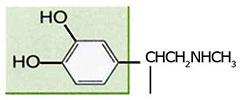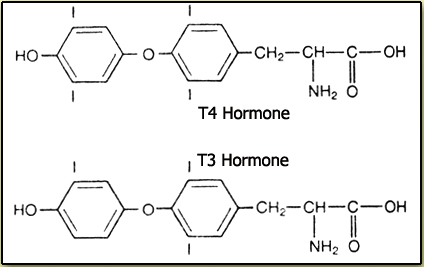Bigotry: The Dark Danger
The Human Miracle

DOWNLOAD THE BOOK
CHAPTERS OF THE BOOK
- Introduction: A Short Voyage Through The Human Body
- The Body’s Transport Network: The Circulatory System - 1/3
- The Body’s Transport Network: The Circulatory System - 2/3
- The Body’s Transport Network: The Circulatory System - 3/3
- The Digestive System - 1/3
- The Digestive System - 2/3
- The Digestive System - 3/3
- The Body's Purification Plant: The Excretory System - 1/2
- The Body's Purification Plant: The Excretory System - 2/2
- Splendid Communication within The Body: The Hormone System
- Your Internal Air-Conditioning: The Respiratory System
- A Resistant Structure: The Skeletal System
- Powerhouses in The Body: The Muscles
- Conclusion: Human Beings are Created By Allah
- The Deception of Evolution
< <
10 / total: 15
Splendid Communication within The Body:
|
|||||||||||||||||||||||||||||||||||||||||||||||||||||||||||||||||||||||||||||||||||||||||||||||||||
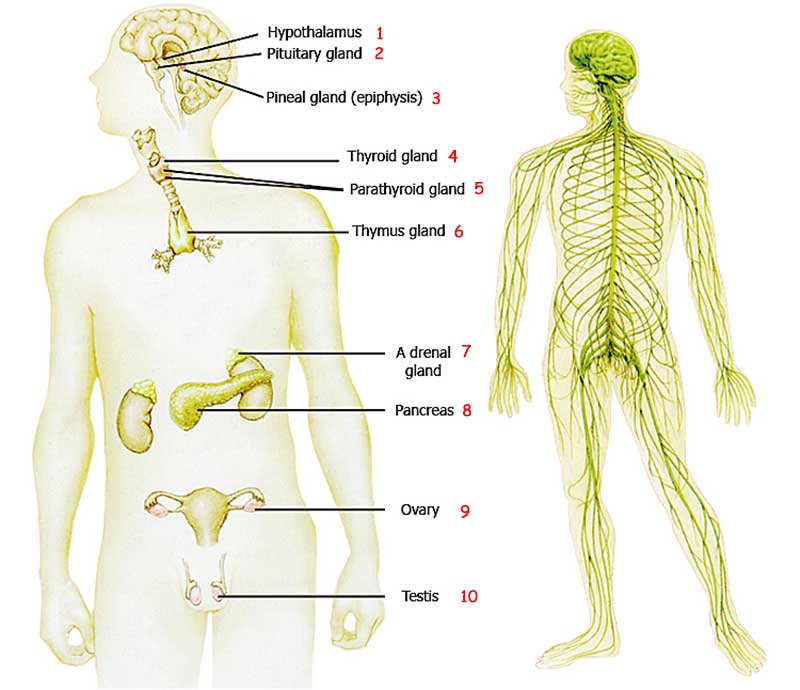
| |
|
1. Hypothalamus |
6. Thymus Gland |
|
At left are shown the sites of the main glands in the male and female bodies, and the general structure of the nervous system on the right. | |
The nervous system and hormone system work together at many points. For example, stimuli from the nervous system are needed in order for the hormone adrenalin to be secreted.
The hormonal system’s communications are delivered thanks to the bloodstream. A gland releases message-bearing hormones directly into the blood. These messages travel throughout the whole body, reach the target organ and set it into activity. But of course the hormonal system cannot function in the absence of the circulatory system. If we recall the link between the hormonal and nervous systems, then we face the fact that the hormonal-nervous-circulatory systems must have arisen at the same time.
The endocrine and nervous systems work together to maintain a balanced equilibrium in the body. The hormonal system plays a role in reproduction, the cells’ use of nutritional substances and in the establishment of salt and liquid levels. The harmony between this system of tissues, glands and all the other organs and cells in the body is striking. Most glands that comprise the hormonal system have no ducts, or channels. Glands release hormones into the tissues around them, where they are absorbed by capillary vessels and carried away by means of the blood. But the condition of the target tissues sets the hormones into action—and hormones may be specific to that tissue. For example, when the male hormone testosterone is secreted, it causes hair to grow on the cheeks and jaw but has no effect on the hairs on the scalp. In addition, other hormones affect the entire body. Thyroid hormone, for instance, stimulates all the cells in the body.
Locks and Keys

| |
|
1. Hormones |
2. Receptors |
|
Hormones and the receptors they affect have a lock-and-key type of relationship. | |
Hormones can be defined as a group of chemical signals coded to regulate the body’s internal environment to stimulate all the different organs and cells. Many tissues remain unaware of a hormone until it reaches them. So how does the target tissue recognize its specific hormone?
On the surfaces of target cells is a receptor that the hormone joins with. The receptor and the hormone are created so specifically for one another that the hormone dispatched never adheres to the wrong receptor.
Every hormone thus resembles a key, and the receptor affected by it resembles a special lock that only that key can open. Yet this three-dimensional harmony is far more complex than—and far superior to—the match between any lock and key. Only one hormone fits the lock and influences that cell’s general behavior. Thanks to that harmony, no incorrect organ or tissue is ever set in motion. 51
When the hormone attaches itself to the receptor on the cell’s surface, a series of chain reactions take place, at the end of which the cell will have carried out the given instructions.
If, for instance, the instruction dispatched commands the cell to produce a particular protein, various enzymes in the cell go into action. These enzymes locate and copy the data for the protein to be produced by going to the DNA, the cell’s data bank. Protein production thus begins.
The elements in the system work like a chain of dominoes. The failure of any one of these links to work will spell the disruption of the whole system—very damaging to the body, and possibly ending in death.
The Hormonal System’s Control Center
The cells that comprise a tiny piece of tissue, no larger than a pea and weighing only 0.5 grams, manage your whole body on your behalf. This tiny pituitary gland, the center of operations of the hormonal system, acts as the conductor of the world’s most magnificent orchestra. This tiny conductor passes on its instructions to the other cells with the help of the molecules known as hormones.
The pituitary gland runs and regulates the hormonal system and works under the control of the hypothalamus region of the brain. Thanks to the data that reach this tiny organ from the hypothalamus, it knows the conditions you require, which cells of which organs need to work in order to meet that need, those cells’ chemical mechanisms and physical structures, the products they need to produce and when production has to be brought to an end. Nor does it simply know all these things: Thanks to a very special communications system, it sends the necessary instructions for these needs to be met.
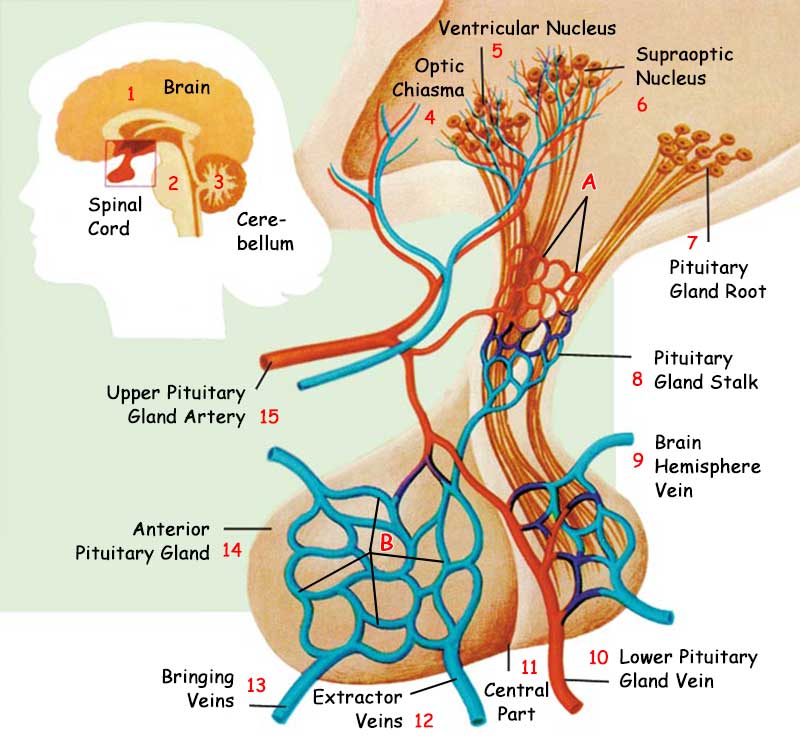
|
A. Capillary Vessel Network 1. Brain 7. Pituitary Gland Root |
|
The connection between the pituitary gland and the central nervous system can be seen. Far left: the connection between the pituitary, the brain (1) the spinal cord (2), and the cerebellum (3). Right: the relationship between the pituitary venous network and the hypothalamus: A- capillary vessel network. B- sinus capillary vessels. |
|
For example, the human body develops until the age of puberty. Throughout this period, trillions of cells divide and multiply, allowing cells and tissues to grow—but growth activity in the tissues halts when it reaches a specific level. The pituitary gland knows how much we need to grow and stops the cell division once that level has been reached.
Growth hormone secreted by the pituitary gland tells the cells how much to divide. Their growth halts when secretion of this hormone stops.
The growth hormone literally knows which regions in the body need to be extended. Regions of the body immediately recognize the growth hormone and do what is expected of them. Yet the growth hormone affects different parts of the anatomy at different levels of intensity in men and women. In men, for instance, the growth hormone goes to the shoulders to build up this region, but does not do this in women.
Even a tiny baby’s vocal chords develop thanks to the growth hormone, which knows how the voice will be produced. It develops women’s vocal chords in such a way as to produce high-pitched tones and men’s in such a way as to produce deeper sounds.
Cells’ obedience to the growth hormone is particularly striking. Thanks to this, all the organs and tissues grow in a harmonious manner. For example, when the growth of the skin covering the nose stops, the development and growth of the cartilage beneath the nose also comes to an end. It never continues growing so that it eventually distorts the skin. All the organs in the body grow and develop in harmony with one another.
The Conductor’s Other Duties
The pituitary gland also regulates your body’s metabolism of carbohydrates and fats. At the appropriate times, it accelerates the protein synthesis takings place in your cells. When blood pressure falls, molecules emitted by the pituitary gland cause the millions of muscles around the veins to contract; and this shrinking of the veins thus causes blood pressure to rise.
The pituitary gland even regulates the functioning of the kidneys, which are far distant from it. This tiny conductor also knows when our bodies need water, and secretes a special hormone (vasopressin) under those circumstances. 52
Mother’s milk is of vital importance for her newborn baby, and the pituitary gland is aware of this need of the baby’s. Shortly before birth, the mother’s mammary glands go into action due to the hormone prolactin issued by the pituitary and start secreting milk. As birth approaches, the uterine muscle goes into action thanks to oxytocin, another hormone issued by the pituitary, and this helps with the birth process. 53
The way that your skin tans after exposure to sunlight is actually a precaution taken by the cells to protect the underlying tissue from the damaging effects of solar rays. Again, the pituitary gland gives the cells this protective command, by emitting the hormone HSH.
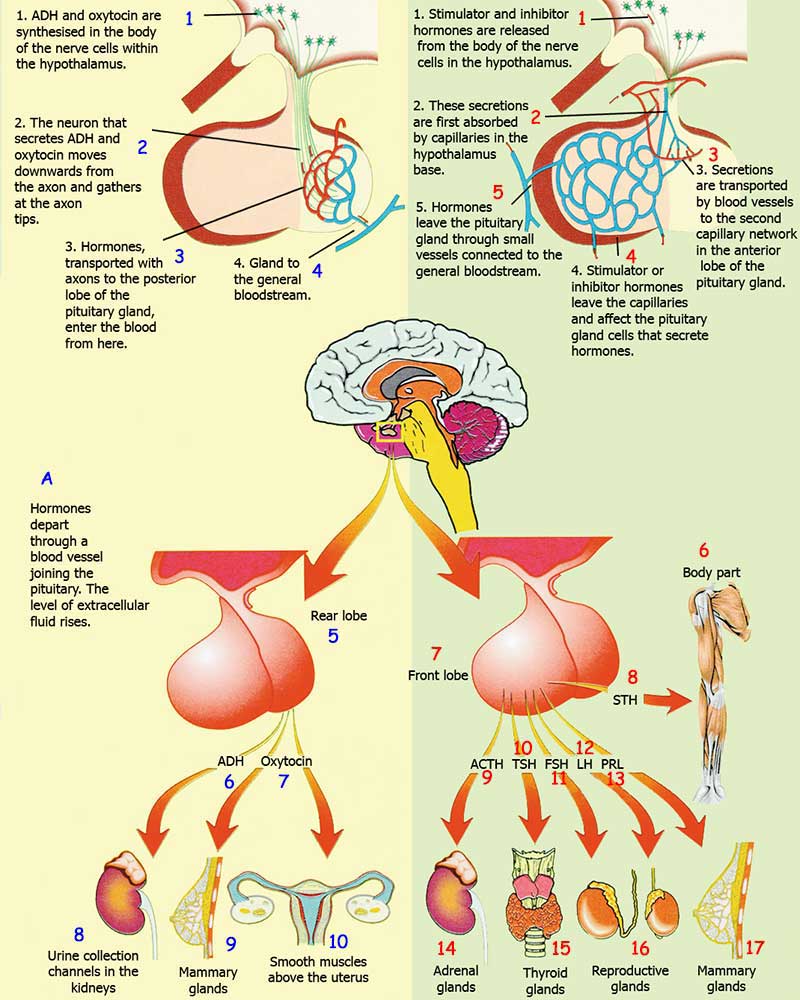
| ||
|
1. ADH and oxytocin are synthesised in the body of the nerve cells within the hypothalamus. 2. The neuron that secretes ADH and oxytocin moves downwards from the axon and gathers at the axon tips. 3. Hormones, transported with axons to the posterior lobe of the pituitary gland, enter the blood from here. 4. Gland to the general bloodstream. Hormones depart through a blood vessel joining the pituitary. The level of extracellular fluid rises. 5. Rear lobe |
1. Stimulator and inhibitor hormones are released from the body of the nerve cells in the hypothalamus. 2. These secretions are first absorbed by capillaries in the hypothalamus base. 3. Secretions are transported by blood vessels to the second capillary network in the anterior lobe of the pituitary gland. 4. Stimulator or inhibitor hormones leave the capillaries and affect the pituitary gland cells that secrete hormones. 5. Hormones leave the pituitary gland through small vessels connected to the general bloodstream. | |
|
6. Body part |
12. LH |
|
|
The positions of the hypothalamus and the pituitary glands in the brain. Like an orchestra conductor, the pituitary gland directs many other organs. Another system, however, ensures the pituitary gland goes into action. The region of the brain known as the hypothalamus analyses hundreds of pieces of information from the body, then decides what needs to be done and where. In order to implement that decision, the hypothalamus sends the necessary instructions to the pituitary gland, which then acts upon the body. (Eldra Pearl Solomon, Introduction to Human Anatomy and Physiology, p. 135.) | ||
In the region of the brain where the pituitary gland is located, more than 20 hormones with entirely different chemical structures have been identified. Most of these hormones possess the ability to stimulate the secretion of other hormones. How did this flawless equilibrium come into being? How was the connection between the hormones established? How does one hormone understand a message from another and react in the correct manner?
The existence of these 20 hormones, all with very different chemical structures but which all work in perfect coordination, can never be explained in terms of so-called, evolutionary mechanisms. Chance can never install hormones within the body and permit them to acquire these properties. No coincidence-based process can ever produce the substances that make up the hormones, determine the signals they transmit, nor install a system by means of which these hormones know where their messages are to go.
The pituitary is just one of the regions where hormones are mass-produced. Hormones of vital importance to our survival are also secreted in such glands as the adrenals, the pancreas, the sex glands and the thyroid. If any one of these were to break down or work deficiently, we would be unable to survive. This whole complex system maintained by the hormonal system constitutes very clear proof of creation.
It is the omniscient Allah Who creates the hormonal system and all its details.
The Manager of the Hormonal System
The pituitary gland does not fulfill its own functions only. With an extraordinary sense of responsibility, it also regulates and monitors the functioning of the other hormone-secreting glands.
This is a most important detail, because it reveals how an organ no larger than a pea acts with an impressive consciousness—which can be better understood when we examine the pituitary’s capabilities in regulating the functions of the thyroid, adrenal and sex glands.
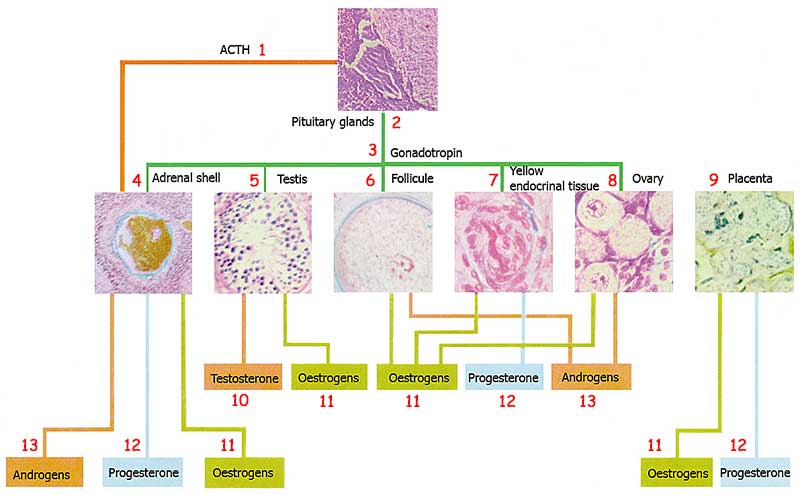
| ||
|
1. ACTH |
6. Follicule |
11. Oestrogens |
|
Diagram showing secretion of sex hormones by interior secretory glands | ||
The pituitary gland lies in the middle of the brain, the thyroid gland under the throat, the ovaries in women and the testes in men, and the adrenal glands immediately above the kidneys. The pituitary secretes the hormone TSH to regulate the development and working of the thyroid, the hormones FSH and LH to regulate the working of the sex glands, ACTH to regulate the working of the adrenals, and LTH to regulate the development of the mammary glands. 54
To examine the effect of the pituitary on just one of these organs: When necessary, the pituitary secretes ACTH to regulate the adrenals gland, the hormone leaves the pituitary and reaches the adrenals by way of the bloodstream. The adrenal glands read its “message” and immediately begin a series of chemical processes by producing the requisite hormone.
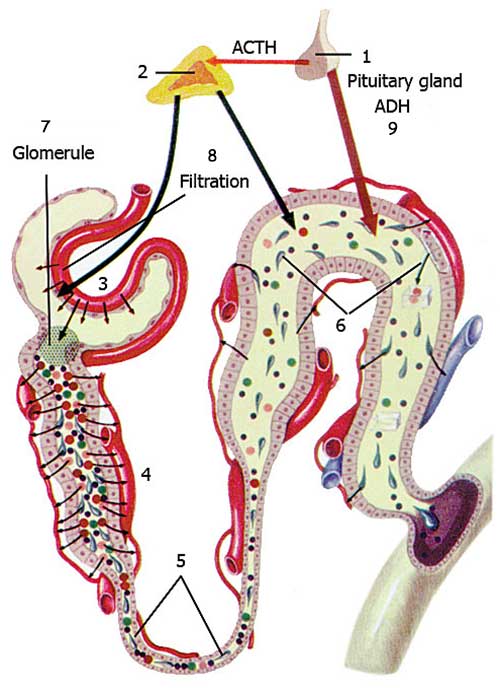
|
7. Glomerule |
|
The pituitary gland in the brain (1) regulates the functioning of the kidneys by secreting two separate hormones. One of these, ADH, enhances the effect of the kidney tubules, while the second, ACTH, stimulates the secretion glands (2). Stimulated by ACTH, one of the hormones secreted by these glands ensures the effectiveness of the kidneys. At this, blood is emptied into the glomerules from the artery (3). The plasma of the blood filtered here is separated from the proteins and heads to the nearest tubule (4). The substances throughout this tubule and the tubule in the loop of Henle (5) are again absorbed by the blood. Substance absorbance by the blood continues until the last tubule (6). | |
|
The blood also deposits certain substances in the last tubule. Here ADH increases water absorbance, and the hormone secreted from the adrenal gland increases the absorption of salt. The process in the kidney is thus completed. Allah introduces us to the matchlessness of his artistry with this detailed system that He has created for the kidneys’ functioning. | |
In order to do this, the pituitary gland has to know the function of the adrenals, how the adrenals discharge that function, and the necessary sign to set the adrenal gland into operation.
Another point that needs to be borne in mind is the distance traveled by these hormone molecules, far too small to be seen with the naked eye. The distance they travel from the brain to the kidney is the equivalent of thousands of kilometers in human terms.
This leaves a great many questions to be answered: How can the pituitary know the responsibilities of another gland so far away and produce just the right chemical and physical formulae to set the adrenals into action? Why did the pituitary assume responsibility for regulating the adrenals’ functioning? How did these chemical substances’ ability to communicate come about? How did mere molecules, unable to see, hear or think, come by such consciousness?
A human being is a conscious entity, able to find methods of using and developing that consciousness. Despite all the superior intelligence, learning ability, and the capacity to research and draw conclusions that human beings possess compared to other living things, they can never—unless they have received special training—know where the hormones in their bodies are secreted, nor ever produce them. It is also impossible for us to intervene in our hormones’ functioning change the places they are secreted from, or add any new ones.
The glands that secrete hormones are collections of cells, themselves consisting of inanimate and unconscious atoms. How can these unthinking organs do what entire human beings cannot? How are organs in the depths of the human body, that can never meet one another, able to exhibit such conscious intelligence?
Evidently, hormones and the glands that secrete them were created, possessing all these features, by a superior power, and were specially located inside the human body. To ensure their continuity, a special system was created, without exception, in all human beings, and this information has been encoded in their DNA.
All these processes require an unsurpassed intelligence. That superior intelligence is that of Almighty Allah, Creator of the entire universe, the Lord of the Worlds, Who has no equals.
Say: “Am I to desire other than Allah as Lord when He is the Lord of all things? What each self earns is for itself alone. No burden-bearer can bear another’s burden. Then you will return to your Lord, and He will inform you regarding the things about which you differed.” (Surat al-An‘am: 164)
Other Hormone Communicatıon Exchanges
The Thyroid Glands
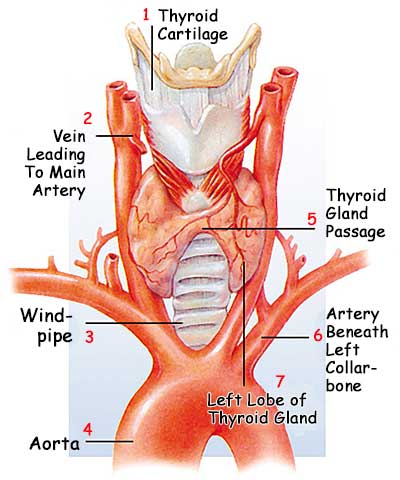
|
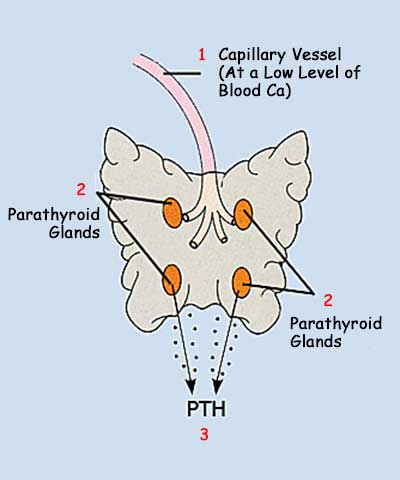
|
|
1. Thyroid Cartilage |
1. Capillary Vessel (At a Low Level of Blood Ca) |
|
The thyroid gland is located in the lower anterior region of the neck, in the front of the windpipe and below the esophagus. The thyroid secretes hormones that regulate the metabolism concerned with the body’s energy production. |
When the level of calcium in the capillary vessels decreases, the parathyroid glands secrete parathormone (PTH), which stimulates the secretion of calcium from bone. Thanks to this flawless control system, the level of calcium rises immediately. |
The hormonal system’s other distribution centers include the thyroid. The thyroid gland regulates your body’s metabolism, so you can enjoy a healthy life. Thanks to thyroxin, a special hormone it produces that affects all the cells in the body, determines the amount of oxygen those cells will use.
For example, if thyroxin is given to a cell in which mitochondria are present, then its oxygen consumption and energy production rise. Insufficient thyroxin in the blood leads to a slowing of the metabolism and increased levels of water and sodium in the tissues. 55
The thyroid’s production and secretion of thyroxin again take place thanks to an interconnected system. Thyroxin’s secretion is brought about by another hormone, thyrotropin, secreted from the anterior lobe of the pituitary.
Calcitonin is yet another hormone secreted by the thyroid gland. Together with the parathormone (or PTH) secreted by the parathyroid gland, calcitonin plays an important role in regulating the body’s calcium-phosphate level. Regulation of calcium levels is of vital importance, since this substance is used in such essential processes as bone formation, the functioning of the muscular and nervous systems, blood clotting, and active carriage from the cell membrane. Therefore, a specific level of calcium needs to be maintained in the bloodstream. That explains why the bones act as a kind of bank, storing calcium. These two different hormones allow calcium to be “deposited” in or “withdrawn” from the bones. 56
The parathormone produced by the parathyroid gland, located above the thyroid, plays a role in helping calcium stored in the bones get returned to the blood. This hormone’s secretion is regulated without any direct influence from the pituitary or nervous system, but automatically, depending on the level of calcium in the bloodstream. This hormone identifies when the level of calcium in the blood has fallen and accelerates the passage of calcium from the bones. Then when the level of calcium in the blood exceeds a certain level, the thyroid secretes the hormone calcitonin, which causes excess calcium in the blood to pass into the bones for storage there. 57
If there is a lack—or excess—of this hormone of such great importance, what sort of problems arise?
In the case of too little parathormone, the level of calcium in the blood decreases, accompanied by contractions in the muscles, especially those of the hands and face. If this constriction occurs in the muscles of the windpipe, breathing is obstructed, which may lead to death. Too much of the hormone causes excessive calcium being released into the bloodstream from the bones, which become easily bent or broken. The kidneys try to expel the excess calcium from the blood, but these crystals of calcium can lead to kidney stones. 58
As these examples show, we humans can live healthily and comfortably, thanks to our hormonal system functioning fully. Indeed, just a small deficiency in the thyroid gland alone can lead to a great many diseases. So who has established and maintained such a perfect system? Who realizes which substances have decreased in the bloodstream, identifies the level of the deficiency and produces the necessary substances, knows what these substances must contain and keeps producing them for a long as required, to effect all the other organs in the body? Does the thyroid itself exhibit such a will? Such a possibility is quite impossible, of course. The thyroid gland is only a community of cells, in which it is impossible to seek anything possessed of consciousness.
Neither can we say that this will or intention belongs to the hormones. What we call a hormone is a collection of molecules. That being so, where must we look for that will?
The sole conclusion we encounter at this point is the fact of creation. All the glands in the body, all the elements comprising the hormonal system, the hormones they produce, the molecules within those hormones and the atoms constituting those molecules are all products of Allah’s incomparable creation.
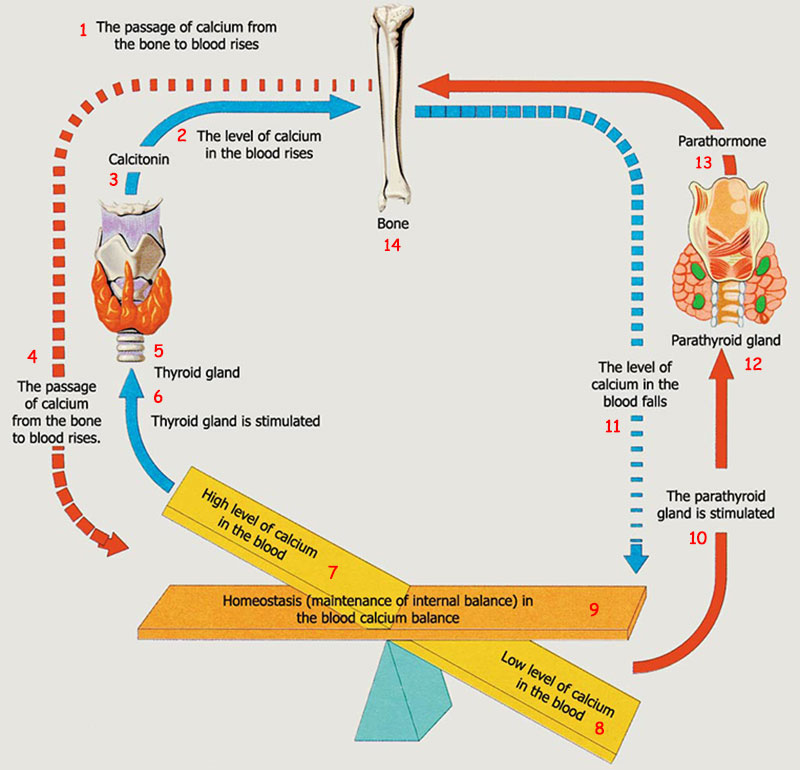
| |
|
1. The passage of calcium from the bone to blood rises |
9. Homeostasis (maintenance of internal balance) in the blood calcium balance |
|
There needs to be a certain level of calcium for the body to survive. The hormone calcitonin, secreted by the thyroid gland, and the parathormone secreted by the parathyroid maintain this balanIe. It is Almighty Allah Who endows the glands in our bodies with the consciousness and will with which to measure the level of calcium in the blood and make adjustments accordingly. | |
The Importance of the Adrenal Glands
Adrenalin, one of the important hormones produced in the adrenals, serves a very interesting purpose, causing various sudden bodily changes in times of emergencies. These changes represent a kind of preparation in the face of abrupt danger. As an example, imagine someone exposed to imminent threat—who is attacked by an animal, for instance. In the seconds that follow, that individual’s body will have requirements very different from those prevailing under normal conditions. His muscles will need to move faster, his blood pressure to rise and the heart to beat faster. He will thus be able to run faster, flee quicker, or deal with the danger in a more powerful manner. But how is all this to happen?
When danger approaches, the body’s alarms are activated. The brain sends a fast command to the adrenal gland, whose cells go into action and swiftly release molecules of the hormone adrenalin. The adrenalin is released into the blood and distributed to the various regions of the body.
The hormone adrenalin has one purpose: to place the entire body on action stations and allow the individual to become stronger, more resistant and faster.
|
1. Signals from the cerebral center |
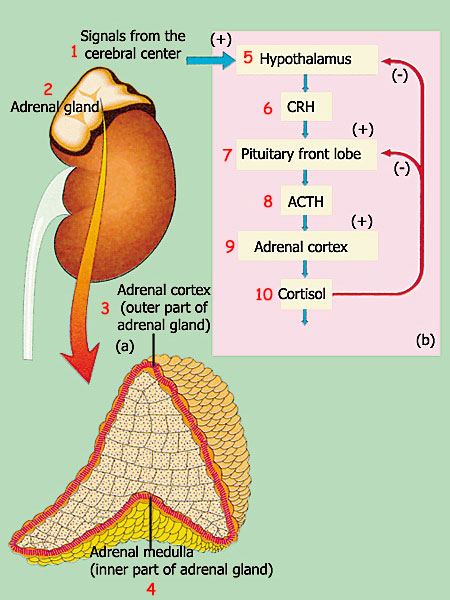
|
|
The adrenal gland and the sections in it are shown. | |
|
This plays various important roles, such as increasing blood sugar levels and arranging the storage of glycogen in the liver. Clearly, the way the kidneys act to regulate the body’s activities with a command from the brain cannot be carried out by the cells. This is of course Allah’s incomparable creation. | |
The secreted adrenalin molecules adjust the veins, allowing more blood to reach vital organs in this case of emergency. Cells around the blood vessels leading to the heart, brain and muscles obey and cause the arteries to expand, so that more blood reaches those vital organs.
The adrenalin molecules also cause arteries going to those organs that will not be needed to contract, thus ensuring that less blood reaches them.
The effect of the adrenalin widens arteries leading to the heart, brain and muscles and also contracts those leading to the skin and the liver. Extra support is thus provided for the organs the body needs most. The vessels leading to the heart or brain never contract by mistake, nor do those going to the liver or skin contract in error. The adrenalin molecules know very well what they must do. The blood vessel cells obey them to the letter. The diameters of hundreds of vessels in your body, and how much blood they will deliver and where, are regulated by the mind of a hormone too small to be seen with the naked eye.
There is another reason behind less blood being pumped to the skin. In the event of injury, the risk of blood loss is minimized. The pallor of the face at times of extreme excitement is also due to less blood being pumped to the skin at that time.
Adrenalin molecules mean something different to every organ:
The adrenalin molecules that widen the blood vessels also accelerate the contractions of the heart muscles. The heart thus beats faster and provides the muscles with the blood they need for extra strength.
When the adrenalin molecule reaches the muscle cells, it permits them to contract more powerfully.
The adrenalin molecules instruct the liver cells to release more sugar into the bloodstream. The level of blood sugar rises, and the muscles are given the extra fuel they need.
As a result of all these special adjustments, a 100% increase in strength takes place. Thanks to the changes that adrenalin causes in the body, a person becomes able to think and make decisions more quickly, is able to fight more strongly and run faster, and also becomes more resistant.
Adrenalin molecules know very well what kind of bodily changes the body needs in times of danger. Moreover, the molecules prepare the body against danger in a most harmonious manner.

| |||||||
| |||||||
|
1. Adrenal gland |
10. Stress | ||||||
|
A schematic representation of the kinds of reactions displayed by the hypothalamus, the internal (adrenal medulla) and external (adrenal cortex) of the adrenal gland at moments of stress. This system, which supplies strength to the body when necessary and works in an interconnected manner, could not have come into being by itself. (Elaine N. Marieb, Essential of Human Anatomy & Physiology, Benjamin/Cummings Science Publishing, p. 280) | |||||||
Every tissue and organ that the adrenalin reaches begins acting toward a common purpose. No organ acts outside of—or in conflict with—that common goal.
The reactions the body needs to make and the precautions that need to be taken in emergency situations have all been prepared, outside the person’s knowledge or control.The adrenalin hormone’s effects on the body once again prove that its workings have been created in a special manner to be compatible with one another.
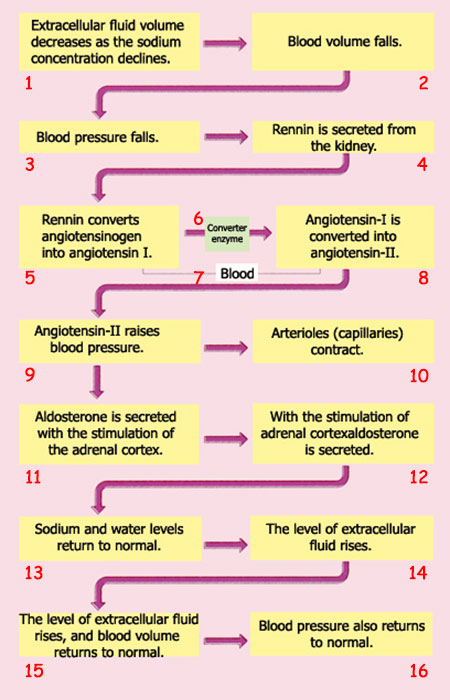
|
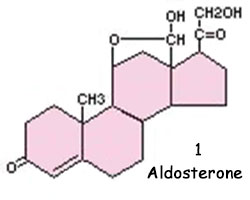
|
|
1. Aldosterone | |
|
The absence of aldosterone which regulates the mineral balance in the body, another hormone secreted from the adrenal cortex, means inevitable death. In the event that this hormone is not secreted, diseases such as circulation deficiency, muscular fatigue and pigmentation in the skin occur. Blood sugar levels fall and resistance to infection declines. (Invitation to Biology, p. 436. In short, it is possible for a human being to live a healthy life only through the formation of the hormone aldosterone, whose atomic components are shown in the diagram above. To maintain that the consciousness and will exhibited during these processes is the work of unconscious and inanimate atoms is of course illogical. | |
|
1. Extracellular fluid volume decreases as the sodium concentration declines. |
10. Arterioles (capillaries) contract. |
|
Events that take place during the secretion of aldosterone and the regulation of blood pressure. | |
Hormones That Refute Darwinism | |
|
Although you have never been aware of them, thousands of commands pass inside your body at every moment, making your life as convenient and easy as possible. For example, when you are excited or afraid, your nerve cells immediately stimulate the adrenalin glands at great speed; the signal reaches them without getting lost on the way. Receiving the message, the glands secrete the hormone adrenalin. This hormone is released into the bloodstream and effectively sets the whole body in a state of alarm. It stalls the actions of the digestive system and halts the digestive process, thus freeing an important quantity of blood to nourish the muscles. At the same time, the rhythm of the heart is accelerated. Blood pressure rises, and the sugar level in the blood goes up, providing extra energy for the muscles. The pupils expand, increasing the eyes’ sensitivity to light. When all of these effects are combined, a person becomes ready to perform better, whether that he chooses to flee, defend himself, or attack.
The nerve cells are structures consisting of inanimate, unconscious atoms. Yet they immediately understand the conditions required by the body and instantly send messages to the relevant body parts. The sites receiving that message also came into existence by the assembly of inanimate atoms. Nonetheless, they immediately understand the message and go into action to produce the requisite hormone, which travels through the whole body and places the relevant organs on alert. To imagine that such a conscious, planned, organized and target-directed system came about by chance is to turn one’s back on logic and common sense. By maintaining that all these systems and organs did in fact come into being accidentally, Darwinists place themselves in a laughable situation. Despite being an evolutionist and an atheist, Malcolm Muggeridge made the following admission concerning Darwinism’s position: I myself am convinced that the theory of evolution, especially the extent to which it’s been applied, will be one of the great jokes of the history books in the future. Posterity will marvel that such flimsy and dubious an hypothesis could be accepted with the incredible credulity that it has. (Malcolm Muggeridge, The End of Christendom, Grand Rapids: Eerdmans, 1980, p. 43.) |
Glands That Create the Differences Between Men and Women
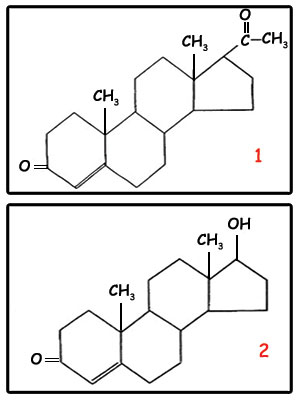
|
|
1. Chemical formula for progesterone |
|
Progesterone is the hormone that prepares the female body for pregnancy, and testosterone the hormone that gives the male body its own particular characteristics. |
When a person reaches puberty, the pituitary realizes that certain changes need to be made in the body and sends a series of commands to the sex glands, or gonads. At this, a hormone secreted in the female sex glands (estrogen) matures the female body and regulates the development of the reproductive organs and bodily structure, while another hormone, progesterone, prepares her for pregnancy.
Testosterone, another hormone secreted in the male sex glands allows the male physical form to mature and regulates sexual development.
The hormones produced by the pituitary and thyroid glands in both male and female bodies possess pretty much the same characteristics. Once puberty has been attained, however, the gonads produce completely different hormones. When the body matures, the sex hormones that are never secreted during childhood go into operation in a particular order and at the appropriate time. How does this phenomenon take place?
A molecule in your body calculates the time that has passed, and goes into operation at a specified time. It is astonishing that an inert substance should calculate the passage of time and, furthermore, that it should go into operation at roughly the same age in all human beings. How does a hormone know about the passage of time? Such a thing is, of course, impossible. It is Allah, the hormones’ Creator, Who sets hormones into action at specific times. It is Allah Who stipulates when they will be secreted and when that process will stop. Allah is He who knows all forms of creation.
A Very Sensitive Measure
Hormones are of indispensable importance for our bodies, but how much volume do they occupy in the blood? One liter of blood contains only from a millionth to a billionth of a gram of hormones. 59 Even though they are present in the body in such miniscule quantities, hormones provide communications in almost all processes in the body, and play a catalytic role.

|
|
The illness known as goiter (above) occurs with the growth of the thyroid gland. |
The way that hormones, occupying such an unbelievably miniscule volume in the blood, are secreted in just the right amounts at just the proper time—and the way that secretion stops at just the right time—are of the greatest importance.
Who regulates all this? Who realizes that too much hormone has been secreted and gives the order to “Halt!”?
If the organs affected by the hormones do more than is required of them, this can endanger the body. An organ that is working more than is necessary sends a message to the gland producing the hormones that set it into operation, saying in effect, I do not need to work any more. Do not produce any more hormones that make me work.
One of the diseases arising from a flaw in this system is hyperthyroidism, which results from an excessive secretion of the thyroid gland. Unless this disease is treated, survival is impossible.
As we have seen, this system works in a flawless manner except in cases of sickness. Every organ knows which gland secretes the hormone that regulates it. If this gland causes it to labor more than necessary, the organ takes action, and establishes communication with the relevant organ, allowing the individual to keep leading a healthy life.
However, the human in whom all this procedure occurs is unaware of any of it, and doesn’t need to undertake any efforts in its fulfillment, which is so important to ongoing health. That is because Allah has made molecules, consisting of inanimate and unconscious atoms, a means whereby a human being can live in a healthy manner. This is a proof of Allah’s infinite compassion for all living things.
Hormone Packaging
Most of the various components of a vehicle produced in an automobile plant—the chassis, windows, engine, and seats—are produced in different factories and assembled later. The same principle applies to the production of some hormones.
The different components produced in the ribosomes, in the light of the instructions in DNA, are brought together in the endoplasmic reticulum region. Later on, these components are sent on to a different region (the golgi body), where the hormone is “assembled” into a form in which it can be used.
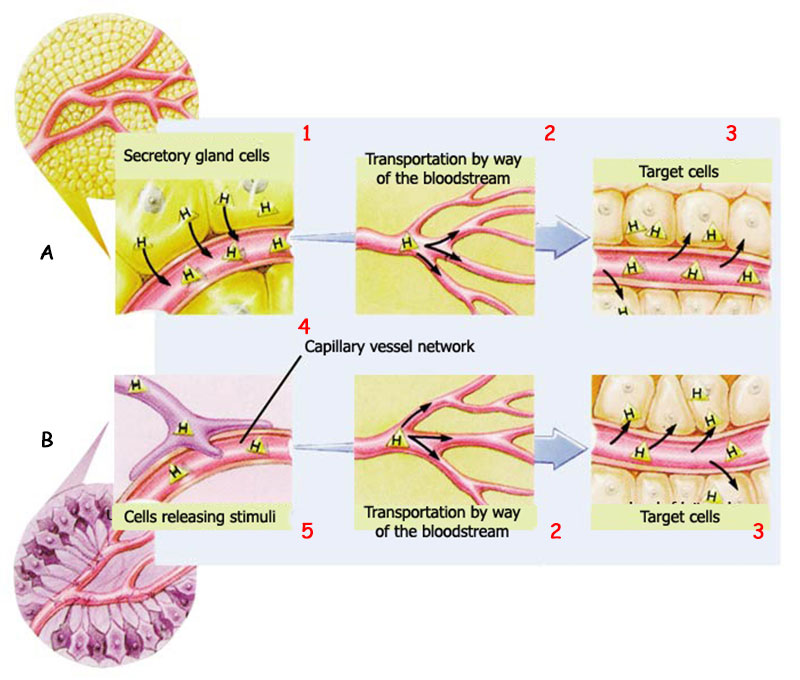
| |
|
1. Secretory gland cells |
4. Capillary vessel network |
|
Hormones are secreted by A) secretion glands and B) cells that emit stimuli. Hormones are generally transported and carried to the target cells by the bloodstream. | |
Though the hormone is produced in a perfect state, this by itself is not enough. The hormone must also protect its three-dimensional structure throughout the long journey it will undertake in the bloodstream, or else it will be damaged or altered en route and become unable to influence its target organs. However, the necessary precaution has been taken to avoid this danger. The hormone molecule is brought to the golgi body and encased in a special packaging, consisting of a thin membrane. The molecule is now ready for its long journey.
Significantly, the cells engaged in producing the membrane do not use the hormones themselves, but send it on elsewhere. The hormones will be used by totally different cells, which are located too far away for the original cells ever to know. Bearing in mind the cell’s dimensions, the journey made by the hormones it produces is comparable to a distance of thousands of kilometers in human terms. The cell cannot know where or how the substance it has produced with such care and effort will be used. Throughout its life, however, it continues to produce complex products, whose purposes it is unaware of, for the sake of that unknown aim.
For example, one special hormone produced by cells in the pituitary regulates kidney activity. A cell in the pituitary gland cannot know what sort of organ the kidney is, where it is, nor the functions it performs. Then how can it produce a substance with just the right features to suit the structure of the kidney, of which it can never have any knowledge? How can it have such control over the kidney’s operations? It is definitely impossible for all this perfection to take place by the will of the cells themselves. They were specially created by Allah to fulfill this task.
To Whom Does Humanity Owe This Magnificent System?

|
|
The same hormones in all human bodies possess exactly the same chemical formulae, so that they perform the same functions in everyone’s body. Sometimes the lack of one substance in a single hormone’s formula makes that hormone unable to perform its functions. For example, if iodine, which is essential for hormone production, is absent in a newborn baby, its thyroid tissue, pituitary gland, thyroid hormone receptors and all the other enzymes will fail to function. Since the thyroid hormone affects other organs and tissues, the slightest deficiency starts impacting all vital systems, especially the heart. If such a condition is present from birth, then the baby stands no chance of surviving for very long. |
The theory of evolution maintains that human beings assumed their present form by small stages, over a process lasting millions of years. This implies that at one time, some of the body’s organs did not exist, and came into being only at a later date.
In order to show how such a claim could never be, let’s take another look at some of the hormones we have discussed. For example, to balance the level of calcium in the blood, several independent factors all need to exist at one and the same time. The absence of even one of those factors—parathormone, for example—will render the whole system non-functional. This also applies to the other glands and the hormonal substances they produce. The absence of the aldosterone secreted by the adrenal glands, for instance, will mean death. That being so, it cannot be conjectured that the adrenal glands came into existence gradually, because in their absence, a human being cannot survive.
Similarly, no human can survive without a pancreas and insulin. Imagine what would happen to semi-humans with no pancreas. The answer is simple; they would enter a coma with the first sugary food they ate. Shortly thereafter, they would die and not wander the Earth for millions of years.
Assume that some of them went on a very conscious diet—which is actually impossible since by far the greater part of the foods we consume contain sugar—and managed to survive. We then face the question of how our imaginary ancestors came to possess a pancreas and insulin.
Did some of them one day say, “We need to resolve this sugar problem. How about placing an organ under the stomach to secrete a hormone that regulates the level of sugar in the blood?” And did those individuals then grow a pancreas underneath the stomach? Did they then calculate the formula for insulin and teach that formula to their pancreas?
Alternatively, did a “successful” mutation take place one day, as the result of a flaw in the DNA of one of these imaginary semi-humans, causing the sudden appearance of a fully-formed pancreas and the hormone insulin?
Yet even that “perfect” mutation would not be sufficient on its own. At the same time, in some corner of the brain, as a result of “chance,” a decision-making mechanism would have to form to keep the blood sugar level under constant control, send the pancreas instructions to start producing insulin when necessary, and give the command to stop once sufficient insulin had been produced as the pancreas.
As these unscientific scenarios clearly show, it is impossible for the hormonal system to have come into being by stages, as evolutionists claim. And so it is with all the other systems in the body. It is impossible for coincidences over the course of time to endow cells with being able to analyze the substances in the blood, make decisions on the basis of those analyses, be aware of the status of other organs and set them in motion, or to use special hormones as a means of communication.
It is Allah, the Omniscient, Who creates this flawless system and sets out every detail in exactly the form it needs to be.
Hormones, Like All Other Things, Act Under Allah’s Command | |
|
Tens of thousands of different hormones are active at every moment in the human body. Thousands of adjustments take place constantly, from the pulse rate to the levels of blood sugar, from the blood pressure in the veins to the intensity of the light reaching the retina. All are regulated by hormones, which are produced in the cells. During hormone production, an excess or deficiency of just a thousandth of a millimeter can disrupt the body’s delicate balances, and even cause serious consequences including death. How can unconscious cells know how much hormone they need to secrete, and how do they perform such a delicate measurements? What we refer to as hormones are actually protein molecules made up of all kinds of strings of different amino acids. These molecules have no sensory organs with which to perceive their environment. Neither do they possess any reason or consciousness with which to make calculations. Yet these molecules find their destinations in the body just as if they were thinking, and transmit the chemical messages to the cells they must reach. In proportion to the microscopic size, they undertake long journeys before they finally reach their intended cells. How do these molecules, devoid of consciousness and perception, reach the right cells? How do these mute hormones transmit to those cells the messages they carry? How do they know they must hand over those molecules?
The cells understand the hormones’ messages and initiate inside themselves the processes that need to be carried out. They perform the activity or production required of them at just the right level—neither too much nor too little. How does a cell devoid of reason and consciousness understand the message that reaches it? How can it know what it has to do, and how? Assume that it does understand all this, why should it obey at once, and in a perfect manner? Why does it never behave irresponsibly, put off a task or forget it? Clearly, it will be quite irrational and meaningless to look for any answer to these questions in the components of the cells, because they lack the intellect and consciousness to perform any kind of calculation, or to make any decision. Like all entities, animate or inanimate, these objects obey the commands of Allah, their Creator. Just as at every point in the universe, cells, hormones, molecules and atoms are all inspired with what they need to do by Allah. This is revealed in these terms in one verse of the Qur’an: It is Allah Who created the seven heavens and of the Earth the same number, the Command descending down through all of them, so that you might know that Allah has power over all things and that Allah encompasses all things in His knowledge. (Surat at-Talaq: 12) |
Footnotes
51.Eldra Pearl Solomon, Introduction to Human Anatomy and Physiology, p. 132.
52.Wallace, Sanders, Ferl, Biology, The Science of Life, Harper Collins Publisher Inc., p. 776
53.Solomon, Berg, Martin, Villee, Biology, p. 1012
54.Arthur C. Guyton and John E. Hall, Textbook of Medical Physiology, Guyton & Hall, pp. 933-934.
55.Prof. Dr. Ahmet Noyan, Yasamda ve Hekimlikte Fizyoloji (Physiology in Life and in the Field of Medicine), p. 1012-1015
56.Eldra Pearl Solomon, Introduction to Human Anatomy and Physiology, p. 138 
57.Solomon, Berg, Martin, and Villee, Biology, p. 1019
58.Eldra Pearl Solomon, Introduction to Human Anatomy and Physiology, p. 138
59.Prentice Hall Science, Human Biology and Health, Prentice-Hall, Inc., U.S.A., New Jersey, 1994, p. 160
10 / total 15
You can read Harun Yahya's book The Human Miracle online, share it on social networks such as Facebook and Twitter, download it to your computer, use it in your homework and theses, and publish, copy or reproduce it on your own web sites or blogs without paying any copyright fee, so long as you acknowledge this site as the reference.
